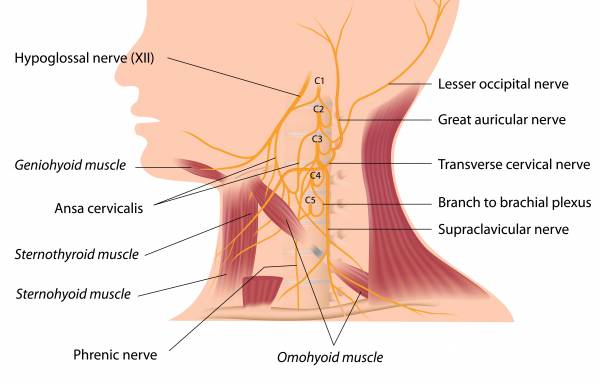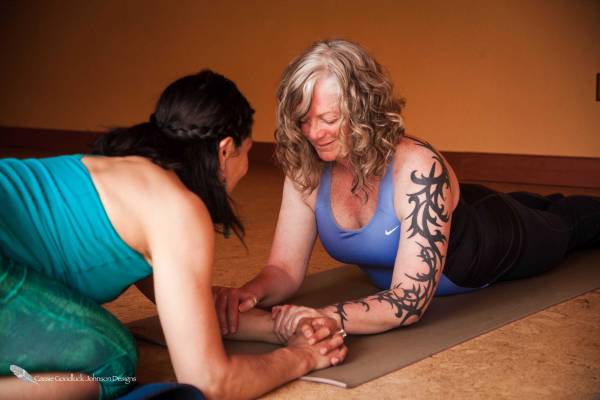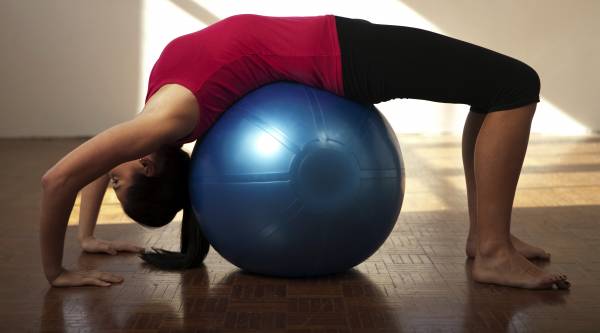We are often commanded to “stop slouching” and understand this to be a bad habit. But do you know why?
Poor posture creates several repercussions – both physically and mentally. In this article, I aim to shed some light on the topic and explain why we should pay attention to our posture and how to reverse the slouch.
Poor Posture Is Exhausting
Our brain is busy making sense of the data it collects in our over-stimulating environments. Lights, sounds, smells, terrain all require a part of our brain to process and guide our actions. Mental stimulation has benefits, but too much is taxing on both our brain and postural alignment.
Applying muscular strength to sit or stand tall and lengthen upward with our torso requires both mental and physical energy. Without adequate mental downtime, our muscles fatigue. This compromises alignment and postural integrity. When we are well rested, strong and flexible, we remain more upright, with good spinal extension. Our ribcage broadens, torso lengthens and taking deep, full breaths becomes easier without the weighty restrictions of anterior collapse compressing into our lungs.
The Anatomy of Poor Posture
When we slouch, our head juts forward and tilts down, flexing anterior neck muscles and over stretching trapezius, splenius, and longissimus. Blood, nerve innervation, and airflow become labored. Vertebrae can be easily pulled out of alignment, creating curvature imbalances along the spine and in some cases causing nerve impingement.
“Nerves in our neck, collarbones, torso, between the ribs, and through our core can become impinged, lessening their ability to relay signals between our brain and body.”
The pectoralis major, pectoralis minor, subclavius, and sternalis muscles become hypertonic (excessively strong) and pull shoulder blades forward with an anterior rotation in the upper arm bones. This causes the sternum and chest to pull inward toward the front spine and down toward the pelvis. This adds more pressure on the diaphragm and inhibits its ability for an unrestricted inhalation.
Nerves in our neck, collarbones, torso, between the ribs, and through our core can become impinged, lessening their ability to relay signals between our brain and body. The phrenic nerve is an important nerve branching off the spinal cord between the third and fifth cervical vertebrae. It runs along the neck and branches off to areas around the heart, pericardium, lungs, and diaphragm. It is the only nerve that supplies signals for our diaphragm to function.

The nerves and muscles of the cervical spine
How to Reverse Poor Posture
Below are three exercises you can do in your own home or office setting. Actually, you can do the Bruegger’s exercise just about anywhere. I recommend it to most clients and teach it in the majority of my Forrest yoga classes to improve posture, alignment, and breathing capacity.
Clients and students walk away after completing these exercises with a greater ability to inhale deeply into the upper chest and feel a decrease of tension in their neck. What I observe is that they are standing upright, with shoulders retracted back and down away from their neck. Additionally, they speak with more energy, which I would deduce is a result of alleviating breathing restrictions and increasing pulmonary circulation.
1. Cobra Pose

Hold posture for 5 breaths minimum, working toward 10.
- Begin by lying on your belly, elbows bent under your shoulders and palms face down.
- Breathe and visualize that you are opening your front ribcage and reversing your slouching posture.
- Inhale and press your torso up, lifting your chest. Your elbows should lift off the floor 3 to 5 inches.
- Exhale while contracting your glute muscles toward your upper thighbones, creating length in your in low back and sacral-iliac joint.
- Inhale and pull your chest forward, widening your sternum between your collarbones.
- Feel your solar plexus and upper abdominal muscles widening. This indicates the diaphragm is drawing down into your mid torso and pressurizing your lungs to receive deeper breaths.
- Feel your neck lengthening anteriorly, posteriorly, and bi-laterally. Avoid hanging your head forward, looking down, or craning back. You don’t want to feel pinching anywhere along your neck.
2. Bruegger’s Exercise or Bird Wing
5 rounds:
- Begin with your elbows bent at ninety degrees and squeezing gently at side of your ribcage. Place your forearms forward with palms up and hands open.
- Breathe with the following in mind: synchronize your breathing with your movement to strengthen your longissimus, illiocostalis, trapezius, and splenius, and expand your ribcage. Inhale into your mid back, pressing your shoulder blades down. On the exhale, roll your forearms out, keeping your elbows tucked at your ribs. On the inhale, roll your forearms forward, keeping your hands in front of your elbows.
- Feel the bottom tips of your shoulder blades squeezing toward your spine.
3. Arching Over Physioball

Hold for 1 minute, pain free.
- Begin with your feet on the floor, knees bent, and hands holding your hips until you feel balanced.
- When you are balanced on the ball, reach your arms wide.
- Breathe into your upper chest, belly, and down toward your pubic bone.
- Feel your chest muscles stretching and your neck and head relaxing on the ball to stretch the front of your spine.
Posture Up
A daily practice of good posture is vital to our health. It helps build and maintain the strength required for our diaphragm and lungs to provide our brain and body with adequate air to stay alert and responsive to external stimuli.
The resulting mental clarity will also help with daily productivity and keeping a positive outlook on life. Don’t let stressors weigh you down. Posture up and stand strong.
More Like This:
- Does Good Posture Matter, Or Is It All a Load of Crap?
- Straightening Up: Progressive Posture Alignment, Part 1
- Why Slouching Isn’t the Only Bad Posture
- New on Pulse Beat Fit Today
References:
1. The Institute for Advanced Reconstruction, “Phrenic Nerve Injuries.”
Photos 1, 2, and 4 courtesy of Shutterstock.
Photo 3 courtesy of Cassie Goodluck-Johnson.






